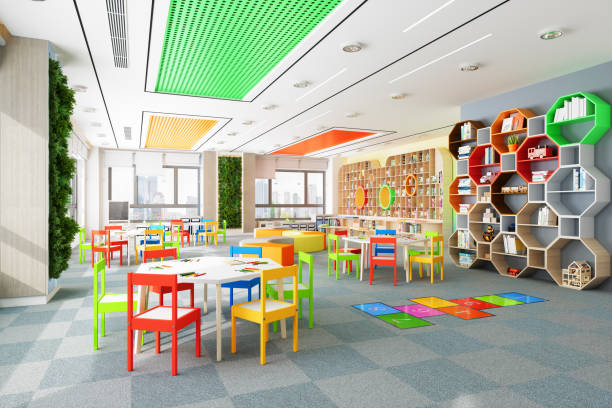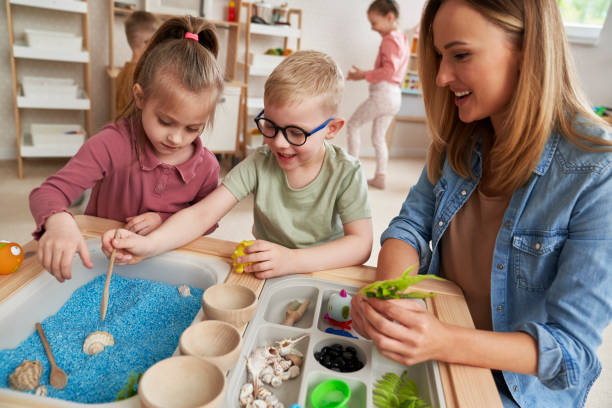Creating a safe environment is the foundation of every quality daycare. Parents entrust caregivers with their children during some of the most important hours of the day, and that trust is built on the assurance that safety comes first. From secure facilities to carefully planned routines, every detail contributes to a space where children can learn, play, and grow with confidence.
Safety in daycare goes beyond locked doors and first aid kits. It involves trained staff who know how to respond to emergencies, equipment that meets strict safety standards, and daily practices designed to prevent accidents. Parents value not only nurturing care but also the peace of mind that comes from knowing their children are in an environment where health, protection, and wellbeing are prioritised.
Top Daycare Safety Tips
1. Facility Safety
A welldesigned daycare facility plays a critical role in protecting children throughout the day. Secure entrances and exits ensure that only authorised staff, parents, and authorised visitors can access the premises, reducing the risk of intruders and giving families peace of mind. Clear sign in procedures and restricted access points help maintain a safe, controlled environment.
Inside the facility, furniture and play areas should be tailored to children’s needs. Rounded corners, secured shelving, and childproof locks minimise the chance of bumps, falls, or accidents. Every piece of equipment should be sturdy and regularly inspected to ensure it remains safe for everyday use.
Fire safety is another essential element of facility management. Smoke alarms, fire extinguishers, and clearly marked evacuation routes must be in place, with staff trained to respond quickly in emergencies. Regular drills also help children become familiar with safe evacuation procedures, turning preparation into confidence.
2. Health & Hygiene Practices
Good hygiene is one of the strongest lines of defense against illness in a daycare setting. Teaching children regular handwashing, while ensuring staff model and enforce the habit, helps reduce the spread of germs. Simple routines such as washing before meals, after bathroom breaks, and following outdoor play can make a big difference in keeping everyone healthy.
Cleanliness of the environment is just as important. Toys, play equipment, and frequently touched surfaces should be cleaned and sanitised on a routine schedule to minimise the risk of infections. Using childsafe cleaning products ensures the space is both hygienic and safe for little ones.
Food preparation also demands careful attention. Staff should follow safe food handling practices, from proper storage and preparation to allergy awareness and management. Clear communication with parents about dietary needs ensures every child can eat safely without the risk of exposure to allergens.
3. Supervision & Staff Training
Effective supervision is one of the most important factors in ensuring children’s safety in daycare. Maintaining the correct staff-to-child ratios allows caregivers to give each child proper attention and respond quickly if an issue arises. Whether inside the classroom or outside on the playground, active supervision means staff are fully engaged, scanning the environment, and anticipating potential risks before they happen.
Equally vital is the training and preparedness of the staff themselves. Every caregiver should be equipped with skills in CPR, first aid, and emergency response so they can act confidently in critical situations. Ongoing professional development not only strengthens safety practices but also builds a culture of responsibility, ensuring children are cared for by knowledgeable and capable hands.
4. Playground & Outdoor Safety
Outdoor play is an essential part of a child’s development, but it must be supported by strong safety measures. All playground equipment should be appropriate, well maintained, and designed to encourage safe exploration. Regular inspections help identify wear and tear early, ensuring that children can enjoy outdoor activities without unnecessary risks.
The play environment itself also requires careful planning. Soft surfaces such as rubber mats, mulch, or sand help cushion falls and reduce the chance of serious injury. Secure fencing and childproof gates create clear boundaries, keeping children safely within the premises while still allowing them the freedom to play and explore outdoors.
5. Safe Pickup and Dropoff Procedures
Arrival and departure times are some of the busiest moments in a daycare, making structured procedures essential. A verified sign in and signout system ensures each child is accounted for, giving staff and parents confidence that no detail is overlooked. Digital check-in tools or written logs can provide an extra layer of security and recordkeeping.
To further protect children, clear policies should outline exactly who is authorised to collect them. Photo identification and preapproved pickup lists prevent unauthorised access and maintain consistency. Additionally, traffic safety measures around the daycare entrance; such as designated parking zones, speed limits, and supervised crossings; help create a safe and orderly flow during busy times.
6. Emergency Preparedness
Preparing for emergencies is a vital part of running a safe daycare. Regular fire drills and evacuation practices help children and staff know exactly what to do in the event of an emergency, reducing panic and ensuring a swift response. These routines turn preparedness into second nature, creating confidence during unexpected situations.
Daycares should also be equipped with fully stocked first aid kits that are easy to access in every room and outdoor play area. In addition, detailed plans must be in place for handling medical emergencies or natural disasters, with all staff trained to respond quickly and calmly. Clear communication with parents about these procedures further strengthens trust and demonstrates a commitment to every child’s safety.
7. Child Safety Policies
Strong child safety policies give both staff and parents a clear framework for maintaining a secure environment. A well-defined sick child policy helps prevent the spread of illnesses by ensuring children who show symptoms are cared for appropriately and kept home until they are well enough to return. This protects the health of all children and staff in the daycare.
Daily routines such as nap time also require careful attention to safety. Cribs and sleep areas should meet current safety standards, with firm mattresses, no loose bedding, and proper supervision at all times. Alongside physical safety, emotional wellbeing is equally important. Policies on bullying prevention and behaviour management encourage respect, kindness, and positive guidance, creating a nurturing space where every child feels safe and supported.
8. Communication with Parents
Strong communication between daycare staff and families builds trust and strengthens a child’s overall experience. Providing daily updates on a child’s activities, meals, and wellbeing helps parents feel connected and reassured about their little one’s day. Simple tools like takehome reports, apps, or brief conversations during pickup can go a long way in maintaining transparency.
Equally important is honest and timely reporting of any incidents, accidents, or concerns. Parents should always be informed about what happened, how staff responded, and the steps taken to prevent recurrence. Encouraging feedback and maintaining open channels for communication ensures parents feel heard and involved, fostering a true partnership in supporting each child’s growth and safety.
Conclusion
A safe daycare is more than just a regulated environment; it’s the foundation of peace of mind for parents and a space where children can thrive without worry. When safety is prioritised, children are free to explore, learn, and grow in a nurturing setting, while families feel confident in the care their child is receiving each day.
To maintain this standard, safety practices should never remain static. Regular reviews, staff training, and open communication with parents help ensure that policies and procedures evolve with changing needs. By committing to continuous improvement, daycares create an environment where every child’s health, happiness, and security remain at the heart of daily operations.
Looking to learn more about early childhood protection tips? METS Early Childhood and Care course has more information for you.






